Wil reviews the brand new 2020 Specialized Fuse Comp hardtail
Not everyone wants to ride a full suspension mountain bike, and not everyone wants to be on an angry XC race hardtail.
For all of those folks, Specialized has this bike – the Fuse.
First introduced back in 2015, the Fuse (and women’s specific version, the Ruze) slotted into the Specialized lineup as a fun-loving trail bike based around a bigger fork, chubbier tyres and more relaxed geometry than a typical XC hardtail. This made it ideal for ripping around fast and technical singletrack, while presenting a simpler, lighter and cheaper alternative to a full suspension bike. And, counter to the name, no this isn’t an e-bike.
After four years of faithful service though, the it was about due for a refresh. And so for the 2020 model year, Specialized has launched the brand new Fuse.
The 2020 Specialized Fuse
Aiming to up its capabilities for hard-charging trail riders, the 2020 Fuse picks up where the old model left off. It’s still a trail hardtail with big volume rubber, but pretty much everything else has changed.
You’ll find a brand new alloy frame with adjustable dropouts, a slacker head angle, and a low-slung top tube that improves standover clearance and compatibility with long-stroke dropper posts. Fork travel bumps up to 130mm, though you can run up to 140mm if you wanted a bit more squish again. Fork offset has also been reduced to help improve the bike’s high-speed stability.
There is no longer a women’s specific version, though frame geometry has been modified heavily across all five sizes from XS through to XL.
The three-model range kicks off at a modest £950 for the Fuse 27.5, and tops out at £1,600 for the Fuse Expert. Sitting pretty in the middle is this very stealthy all-black Fuse Comp, which sells for £1,250.
In Australia, Specialized will only be stocking the Fuse 27.5 ($1,800 AUD) and the Fuse Comp ($2,300 AUD). However, you’ll also have the option of buying the M4 frame on its own for $1,000 AUD.
The Bike
While the Fuse 27.5 gets a more basic A1 alloy frame, the 29er Expert and Comp models are built around a lighter and sleeker M4 alloy frame.
With its slim and curvy hydroformed tubes and those smooth, low-profile welds, it has the appearance of being far more expensive than it is. Indeed the integrated tapered head tube, internal cable routing and clean bolt-up axles front and rear keep it all very clean and classy.
Gone is the PF30 bottom bracket (hurrah!) and the distinctive ‘Diamond Stay’ split chainstay yoke of the old model, and in its place you’ll find an ever-so-slightly elevated drive-side chainstay along with a good ol’ threaded BB shell.
Despite losing the funky split chainstay yoke, the new Fuse is still capable of swallowing big rubber – you can fit up to a 27.5×2.8in or 29×2.6in tyre in the back end. In the case of the Expert and Comp models, you get 29in hoops as stock, whereas the entry level Fuse 27.5 comes with – wait for it – 27.5in wheels. All models are wheelsize ambidextrous.
Even more impressive though is the fact that the new Fuse’s back end is even shorter than its predecessor. Chainstay length shrinks down from 430mm to 420mm, which is darn stubby for a big wheel mountain bike.
Look a bit closer though, and you’ll see that the M4 alloy frame now features adjustable dropouts. There’s up to 15mm of horizontal adjustment via two bolt-up chips and integrated tensioners, which means you can set the chainstay length anywhere between 420-435mm. This can be used for altering geometry, and it can also be used to setup the Fuse as a singlespeed.
One of the other big changes over the previous Fuse is the reduction in standover height, which has been achieved by way of a low-slung top tube and a shortened seat tube. According to Specialized, there’s up to 52mm more standover clearance over the old model, with each frame able to accommodate longer travel dropper posts.
Of note here is the move to a fatter 34.9mm diameter seat tube, which sees the Fuse following in the footsteps of the most recent Enduro and Stumpjumper models. This does limit aftermarket dropper post options, though brands including BikeYoke, RockShox and Specialized itself, are offering posts in this bigger 34.9mm size. All Fuse models come stock with an internally-routed TranzX dropper post.
As for the rest of the Fuse Comp’s outfit, Specialized has put together a smart parts package that takes advantage of plenty of decent in-house product, including the wheelset, tyres and cockpit.
There’s also an air-sprung RockShox Recon RL fork, along with SRAM Level hydraulic disc brakes and the new SX Eagle 1×12 drivetrain. This includes a 3-piece crankset and the cheaper SX mech and shifter, though you still get the NX Eagle cassette and the chain-hugging X-Sync 2 chainring.
Setting Up
When I first got the Fuse Comp into the workshop to get it setup for its maiden voyage, the first thing I noticed was just how long it is. Reach for the medium size has grown by 20mm to 440mm, and along with the 45mm stem and 780mm wide riser bars, the cockpit is plenty spacious.
At 175cm tall, I certainly wouldn’t want it any longer. However, disciples from the Church Of Uber-Long™ will be happy to know that the short seat tubes mean you can easily up-size if you really want.
Following the guidelines on the back of the fork, I settled on 85psi in the air spring to support my 70kg riding weight. It’s worth noting that the Recon RL doesn’t allow for the use of Bottomless Tokens like you get on pricier RockShox forks, but it does come with adjustable compression and rebound damping. There are only five clicks of rebound adjustment though, and I ran the little plastic adjuster tab at one click slower than halfway.
The aptly-labelled Stout Trail wheelset is built around sealed bearing hubs, with 28 standard J-bend spokes laced to each of the 6061-T6 hookless alloy rims. At 2202g on our workshop scales, it is by no means a lightweight wheelset. That’s compounded by the heavy 616g NX Eagle cassette and the inclusion of 250g inner tubes.
This means you can drop close to a half a kilo by going tubeless though, since the rims come pre-taped and the tyres are of the 2Bliss variety. All you’d need is sealant and valves to ditch the tubes.
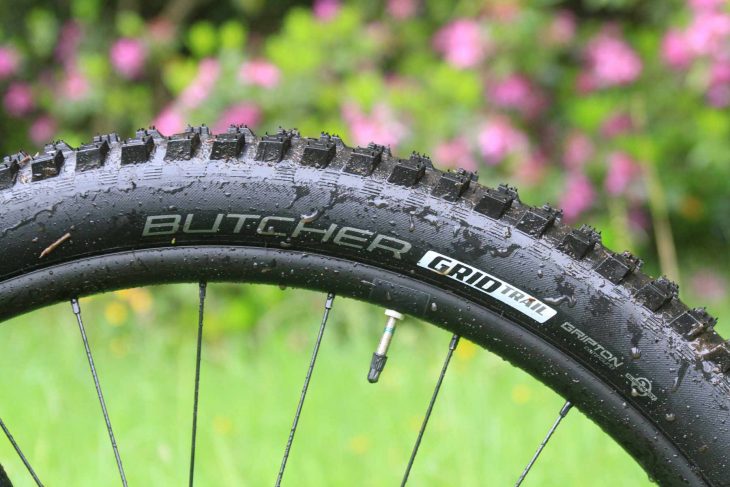
The wheels come shod with new-school 2.6in wide rubber, with a Butcher on the front and the new Purgatory on the rear. I was surprised to see these measuring up very close to the claimed width, which makes for a nice change from previous Specialized tyres that almost always end up undersized. I set these up with 18psi in the front tyre and 20psi in the rear.
Of note is that the Butcher has an updated tread pattern with more robust cornering blocks, and it also features the new burlier GRID Trail casing that sees it tipping the scales at a substantial 1071g. Meanwhile the Purgatory comes in at 980g, and gets a completely revamped tread pattern that’s also supposed to offer better cornering and braking performance. According to Specialized, these tyres will be available aftermarket, but not until September.
Given the weighty wheelset and tyres, the Fuse Comp isn’t the most lithe bike. Our Medium test bike came in at a substantial 14.21kg (31.26 lbs) without pedals.
The Ride
Now I’ll fully admit here that it has been some time since I rode a hardtail. And it’s been even longer since I rode a bike around the £1k price point.
It isn’t that we don’t review less fancy-pants hardtails – we do, and I have. It’s just that more recently, our lad Antony has evolved to become the Budget Bike Bastardo© of the team, while any sort of hardcore hardtails tend to end up in Andi or David’s sweaty palms.
Consequently, I wasn’t too sure what to expect from the Fuse Comp. After all, this is a bike that costs about the same as the last fork I was riding…
The thing is though, even without a rear shock, the Fuse Comp is a really smooth riding bike. A combination of the frame’s slender tubing, the 29in diameter wheels and high-volume 2.6in tyres gives the Fuse a much more supple ride quality than I’d been expecting, with great composure on messy trail surfaces. It isn’t quite as springy as the skinny steel tubing on the Cotic SolarisMAX, but it’s impressively close – a testament to how good alloy frame technology has come over the past decade.
That comfort is supported by the superb Specialized Bridge saddle, which has a nicely flat profile with a gentle sculpted channel through the middle. And though the new lock-on grips are quite thin, they’ve got a great compound and just the right amount of squish to them.
Along with the reasonably steep 74° seat angle (which steepens further as the fork compresses), and the wide bars that help to open up your chest over the front of the bike, the Fuse is actually a really pleasant bike to winch uphill on. Given the porky wheels and the bike’s overall heft, this surprised me.
But even on the very steep valley climbs that surround Singletrack HQ in Todmorden, where gradients regularly tick over 20%, I never found myself battling with my pedalling position or getting all folded up over the bars trying to keep the pedals turning.
I was certainly glad for the wee 30t chainring, which provides useful low-end grunt when combined with that big 50t sprocket at the back.
Really though, it’s the comfortable and well-balanced seated position that contributes most to the Fuse’ efficient climbing manners. A lighter wheelset would only improve things further.
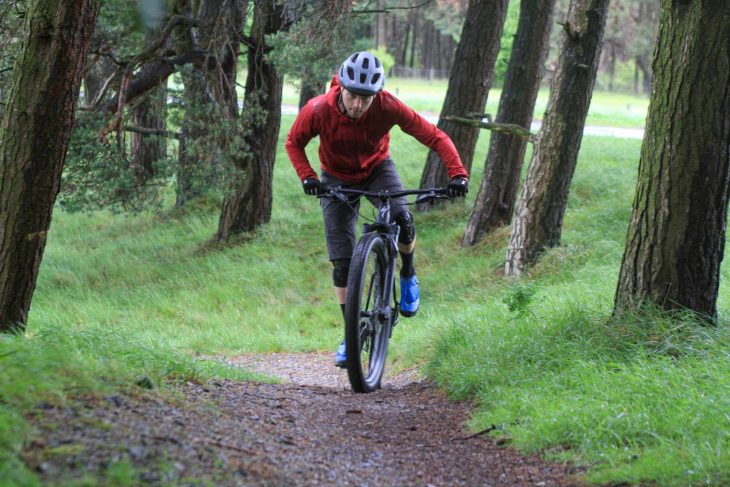
On rockier and more challenging ascents, the Fuse does a great job of maintaining its composure to ensure the wheels keep turning over. Climbing traction from the rear Purgatory tyre is ok, but it starts to suffer as things get loose or muddy (or both, as has been the case during the last fortnight of ‘summer’ in the UK).
The flip-side is that the chevron-shaped centre tread blocks roll quite efficiently given the 2.6in tyre’s size and weight, and under hard braking those same edges dig in really well on loose and nadgery descents.
Speaking of descending, the Fuse absolutely thrives on it.
Riding a few local Hebden tech trails with a couple of mates who were all on long-travel trail bikes, I managed to keep up without feeling like I was constantly riding on the ragged edge. Of course the rear wheel bounces around quite a bit, but thanks to its roomy wheelbase, low-hanging BB, grippy tyres and wide handlebars, the Fuse feels steady and manageable.
Plus tyres and dropper posts have no doubt become two of the hardtail’s best weapons, and they’re used to full effect here. With more traction and comfort, the low-pressure tyres smooth out the harsher impacts, keeping you connected to the trail surface for longer. And with the saddle slammed out of the way, you’re better able to bend your knees and elbows to jockey the bike more easily when things get real rough.
That aside, it’s the Fuse’s geometry that is the real stand out on the faster and more technical downhills. With its 66.5° head angle and reduced offset fork (46mm), the Fuse ends up with quite a large amount of trail at 113mm. Compare that to the 117mm of trail on the Giant Trance 29 I recently reviewed, and the 95mm trail of the previous Fuse.
The effect of this increased trail is a very calm and steady feel through the front wheel. Rapid impacts are less likely to jerk the grips out of your hands, and that means it takes quite a lot to knock the Fuse off-line. (Note: If you want to know more about fork offset and how it affects front-end handling, check out my fork offset article here).
The Fuse’s competent descending nouse is made all the more impressive given the performance of the RockShox Recon fork. It’s not that it’s a bad fork – it’s actually quite smooth with good small-bump sensitivity, and all the settings are simple and easy to adjust. Specialized has also spec’d the front hub with oversized Torque Caps, which provide a more substantial interface between the thru-axle fork lowers and the hub. This means torsional rigidity is pretty good, though the fork can still twang at high-speeds. This is partly due to the more basic damping action, which has a tendency to spike when walloping into stuff really hard and fast – something that the Fuse loves to do.
Again, the last fork I rode was a Fox 36 GRIP2, so it’s not exactly a fair comparison. Still, if I was looking at getting a new Fuse, I’d seriously consider going up to the £1,600 Expert model, which comes with the beefier RockShox 35 Gold fork as standard. Then again, I reckon the frame is more than deserving of any upgrades you’d want to make down the line, including the fork.
Irrespective of the fork’s behaviour, the Fuse’s high quality frame and competent geometry do a lot to carry it along swiftly. But while it’s steady, it doesn’t end up feeling too big and cumbersome. The stubby stem and wide bars ensure you have plenty of leverage over the front wheel, and that helps to lean the bike over when engaging in rapid changes of direction.
Also helping in the agility department is the option to slam the rear wheel right up against the curved seat tube. At 420mm in its shortest position, this compact rear centre helps the Fuse to carve corners more easily. No, it’s not quite as sporty as a sharper XC hardtail, but the Fuse straddles a nice balance between stability and agility.
Why would anyone want to extend the rear centre out to 435mm then? Well for taller riders on larger frame sizes, pushing the rear wheel back further will help to balance out weight distribution. A longer back end will also result in better climbing performance on really steep ascents, and the increased wheelbase will make the bike feel more planted on the way back down. Horses for courses and all that, but it’s brilliant to have the adjustability built into the frame – something that we don’t see on a lot of on hardtails around this price point.
Component Notes
Given its sharp price point, I think Specialized has done a bang-up job of putting the cash where it matters on the Fuse Comp. In particular, the wheels and tyres, while heavy, provide reliable and versatile performance in a wide range of conditions. They’re a big confidence-inspiring performance booster for this bike.
I was only able to ride the Fuse Comp for a couple of weeks before the official launch, so I didn’t encounter too many mechanical issues with it. That said, I did find some rotational play developed in the TranzX dropper post within a couple of rides, which was just noticeable enough under pedalling to be annoying. I can forgive Specialized’s product managers though, because the under-the-bar remote is superb.
After a couple of particularly grim days of riding in the filth, the SX mech did begin to complain and occasionally skip around. Like the shifter, there’s a lot of plastic used for the mech’s construction, so I have relatively low expectations for longterm durability. That said, I’d much rather upgrade a derailleur than a frame or wheelset.
One thing I would change from stock though is the organic brake pads. The Level brakes impressed with a good, solid lever feel, and a respectable amount of usable power in the dry. However, wet weather sees braking power drop off drastically, which given the last two weeks of ‘colourful’ weather in t’Valley, has left me a little nervous once or twice on some of our steep and rutted-out descents.
All-weather riders should definitely look at swapping in some sintered metal brake pads, though as your riding speed and skills progress in the longterm, I could totally see an upgrade to some more powerful 4-piston anchors for the Fuse.
3 Things That Could Be Improved
- Go tubeless – both the rims and tyres are 2Bliss ready, and so valves and sealant are all you need to ditch the tubes
- Sintered brake pads – the stock organic pads are smooth and quiet in the dry, but they howl and lose significant power in the wet
- The Recon fork is a surprisingly smooth performer, but if you were looking to throw some cash at an upgrade, the Fuse is totally deserving of a higher quality fork to match its go-fast potential
3 Things I Loved
- The high quality M4 alloy frame has a surprisingly smooth ride quality and an inspiring, aggressive, low-slung shape
- Proper 2.6in wide tyres – the versatile Butcher/Purgatory combo is a confidence inspiring-boost for this hardtail
- The little details like the under-the-bar dropper lever, tidy bolt-up axles, and adjustable dropouts
Overall
Specialized has built a very fun and very capable trail bike in the new Fuse. The new geometry gives it a superb amount of stability and control on the descents, and a concerted parts package ensures that you can make the most of its high-speed capabilities whether you’re riding buffed-out trail-centre singletrack, or loose and rocky trails out in the mountains.
I was pleasantly surprised by its comfortable climbing manners, and even more impressed with how well it could bomb back downhill on the sorts of trails I’d normally be riding on 140mm travel full suspension rigs. It’s a great example of just how good a modern hardtail can be.
Of course some concessions have been made to get the price down to where it is. The brakes could be more powerful, and the fork could be more controlled at high speed, but I’m really nit-picking here. Ultimately the heart of the Fuse is its high quality M4 frame, which provides a superb foundation for riders looking for a longterm companion that can help support their riding progression over time.
2020 Specialized Fuse Comp Specifications
- Frame // M4 Hydroformed Aluminum Alloy, Adjustable Dropouts
- Fork // RockShox Recon RL, Solo Air, 46mm Offset, 130mm Travel
- Hubs // Specialized Stout Trail Boost 110/148
- Rims // Specialized Stout Trail, 28h, 29mm Internal Rim Width, 2Bliss Ready
- Tyres // Specialized Butcher GRID Trail 29×2.6in Front & Purgatory GRID 29×2.6in Rear
- Crankset // SRAM SX Eagle, 170mm Arms, 30t X-Sync 2 Chainring
- Rear Mech // SRAM SX Eagle, 12-Speed
- Shifter // SRAM SX Eagle, 12-Speed
- Cassette // SRAM NX Eagle PG-1230, 11-50t, 12-Speed
- Brakes // SRAM Level, 180mm Front & 160mm Rear Rotors
- Bar // Specialized Stout Pro Alloy, 31.8mm Diameter, 780mm Wide
- Stem // Specialized Stout Alloy, 31.8mm Diameter, 45mm Long
- Grips // Specialized Single Lock-On
- Seatpost // TranzX, 34.9mm, 125mm Travel (150mm on L/XL sizes)
- Saddle // Specialized Bridge, Cromoly Rails
- Size Tested // Medium
- Sizes Available // Extra Small, Small, Medium, Large & Extra Large
- Weight // 14.21kg / 31.26 lbs
- RRP // £1,250 / $2,300 AUD
Review Info
| Brand: | Specialized |
| Product: | Fuse Comp 29 |
| From: | specialized.com |
| Price: | £1,250 / $2,300 AUD |
| Tested: | by Wil Barrett for 2 weeks |
Comments (4)
Leave Reply
Post Comment
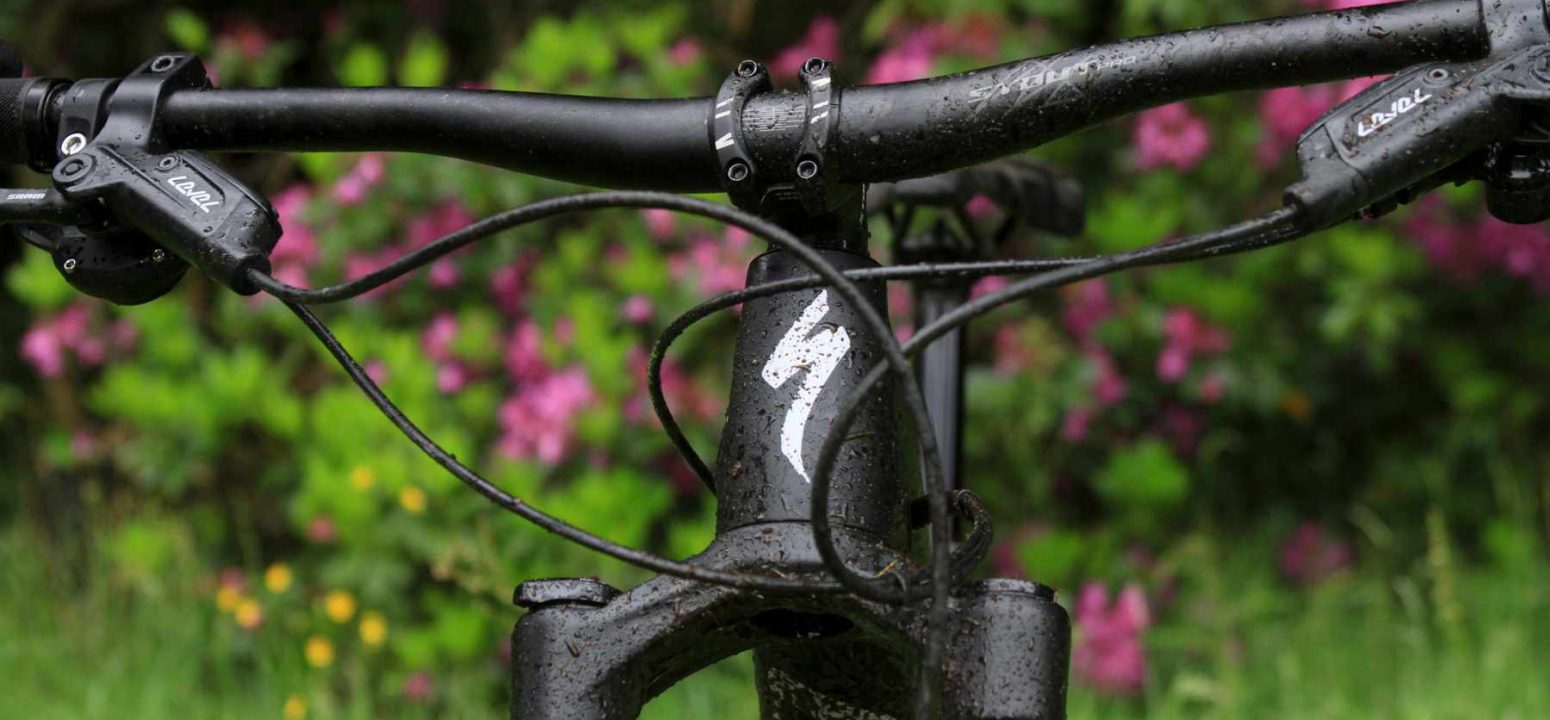
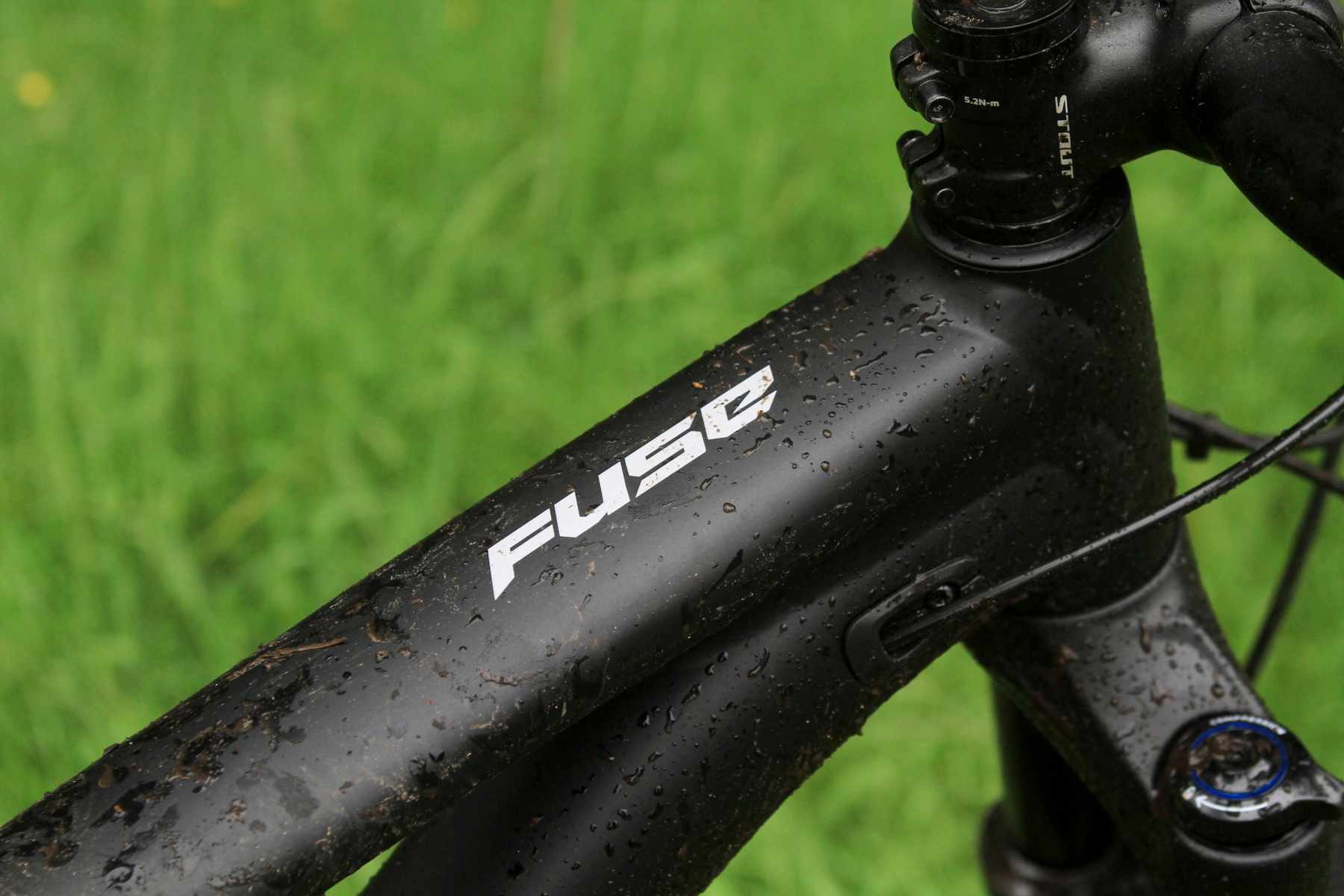
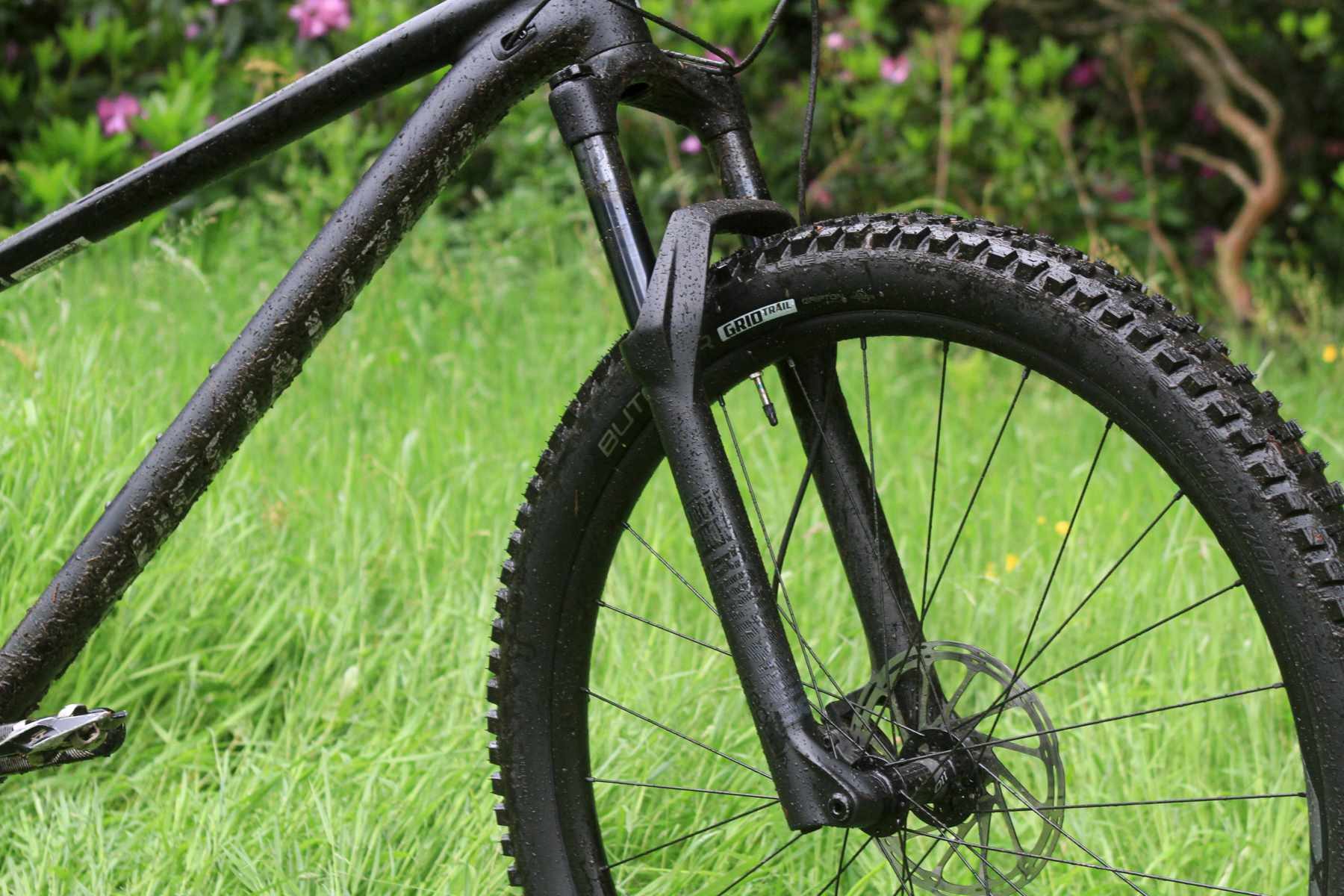

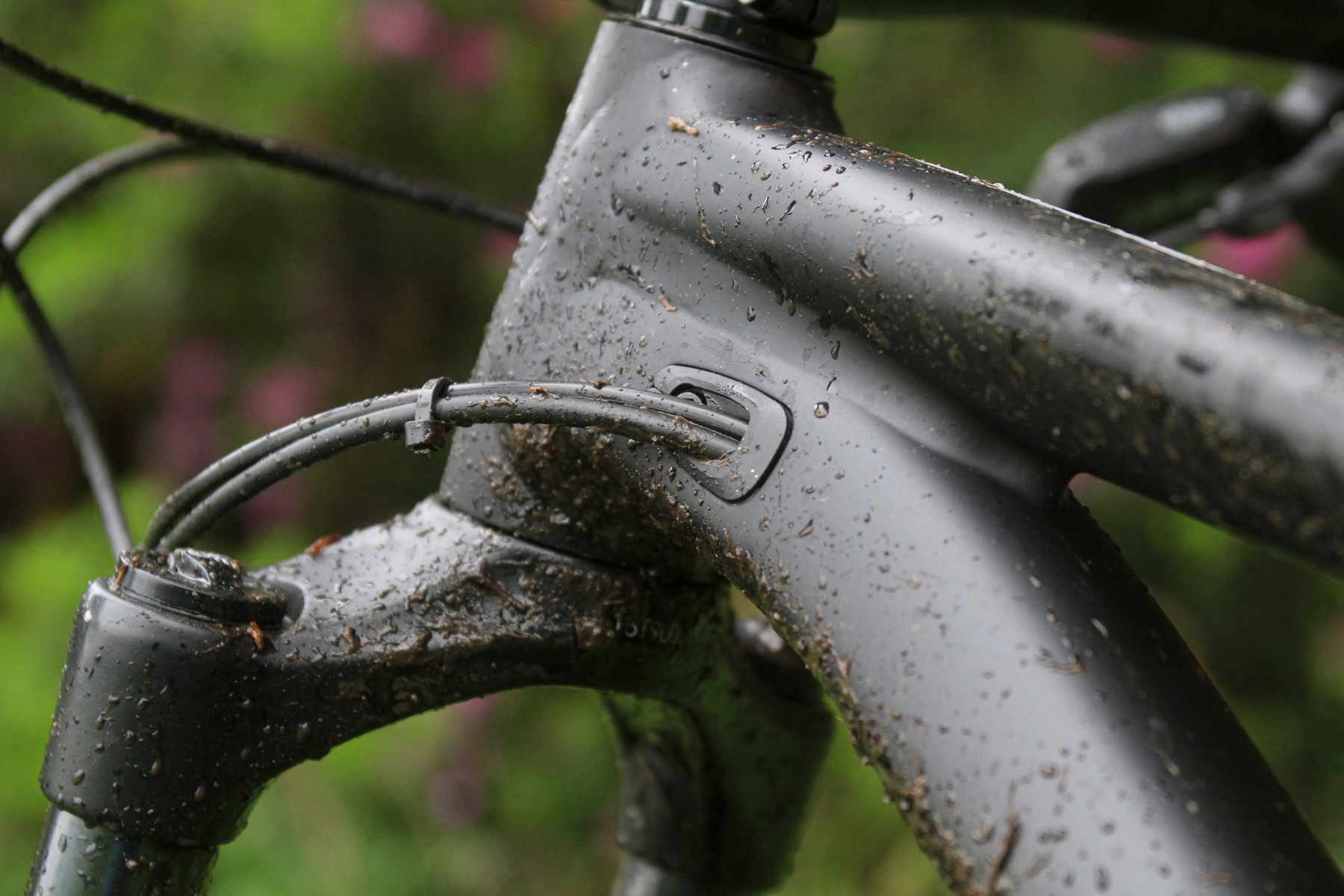


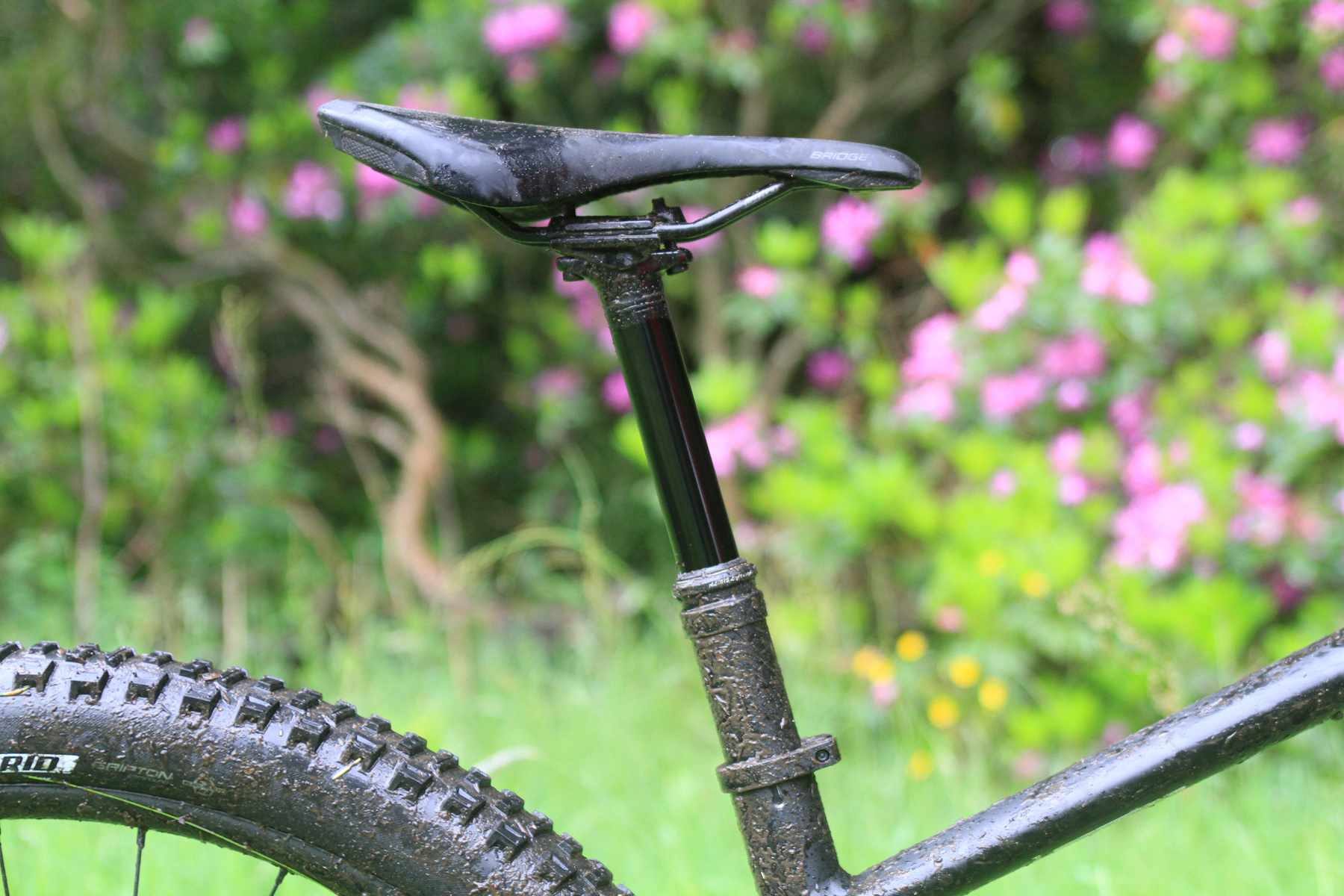

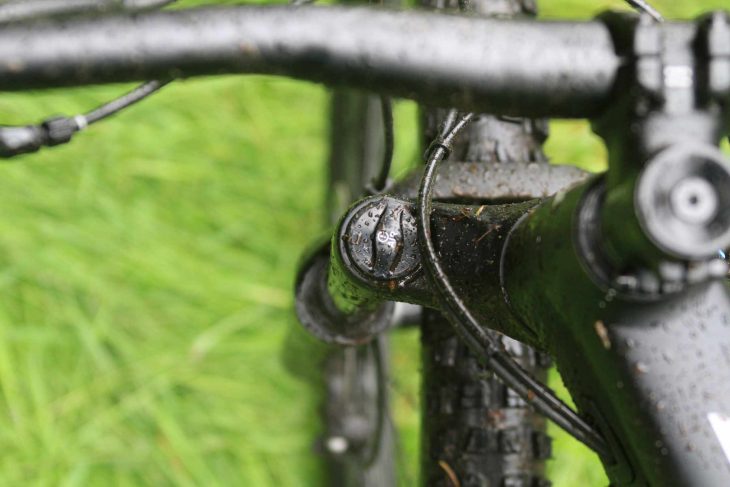

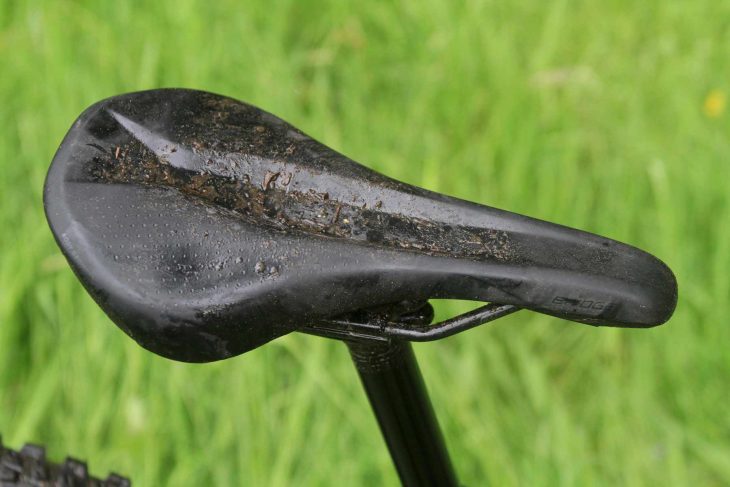
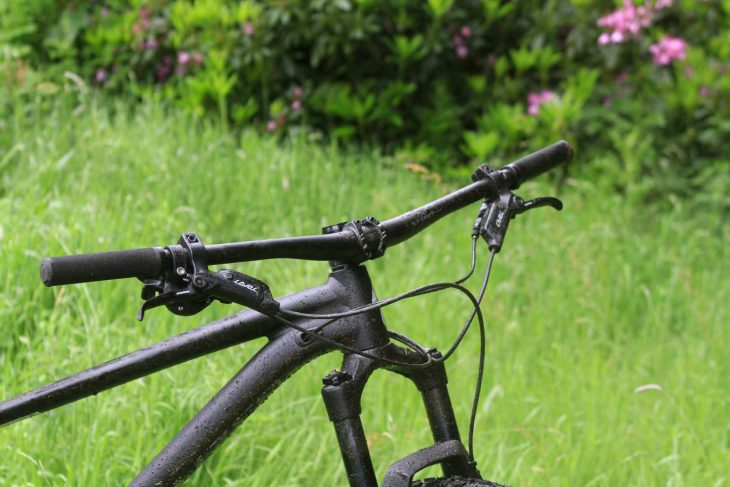
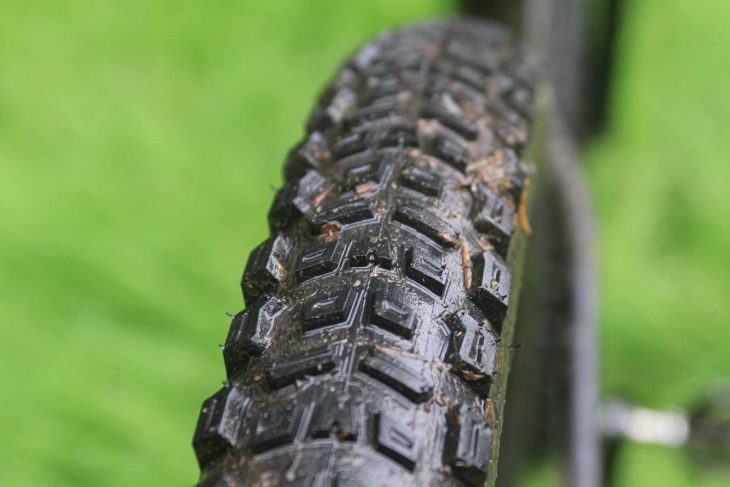
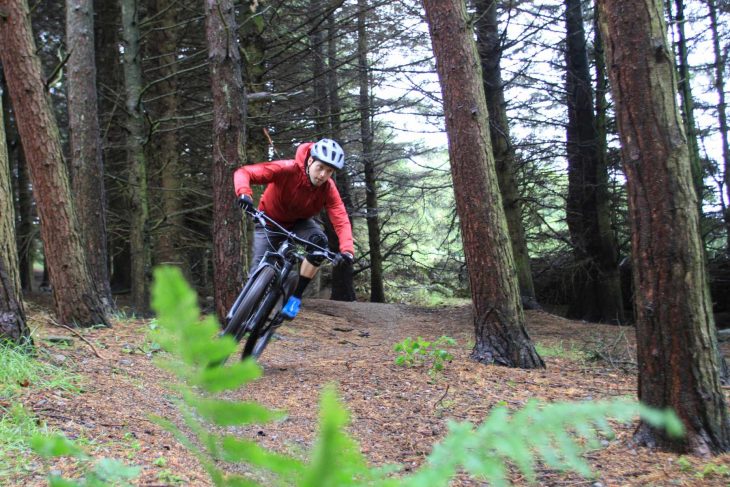
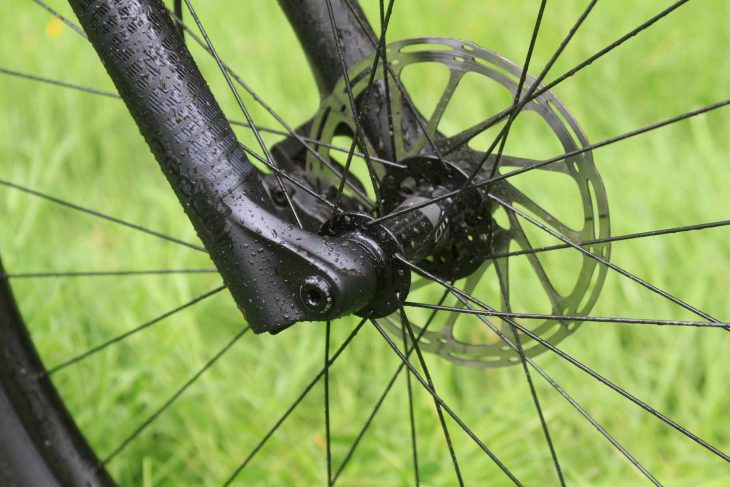
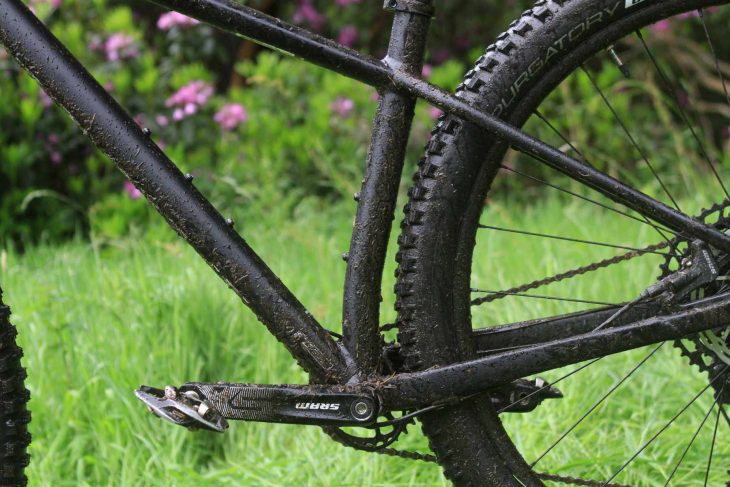
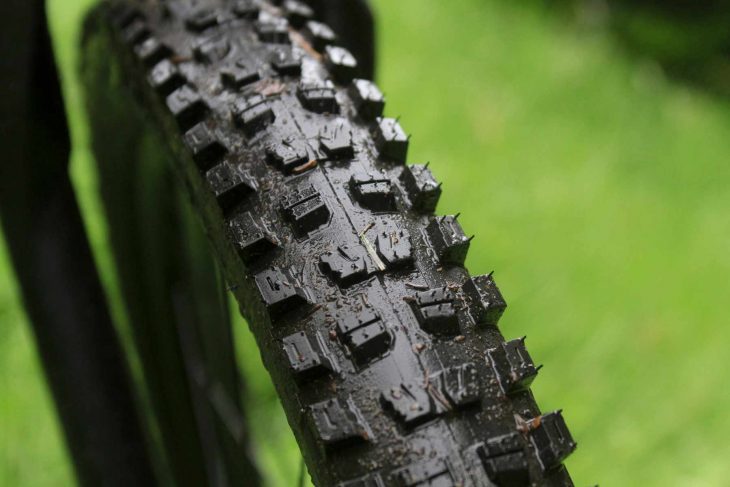
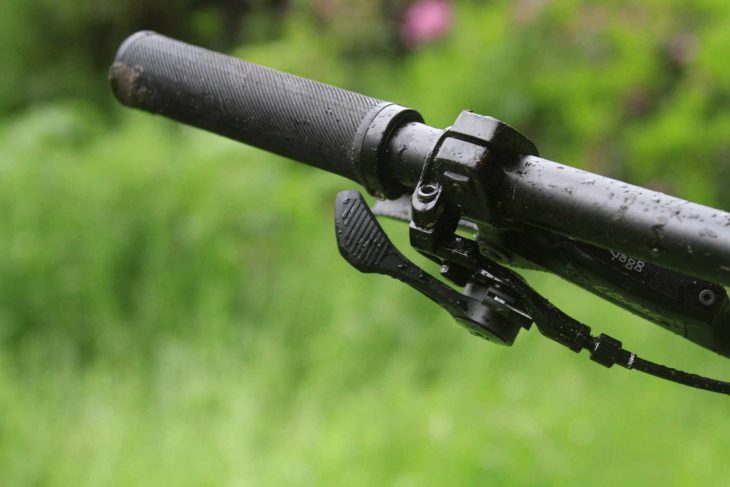
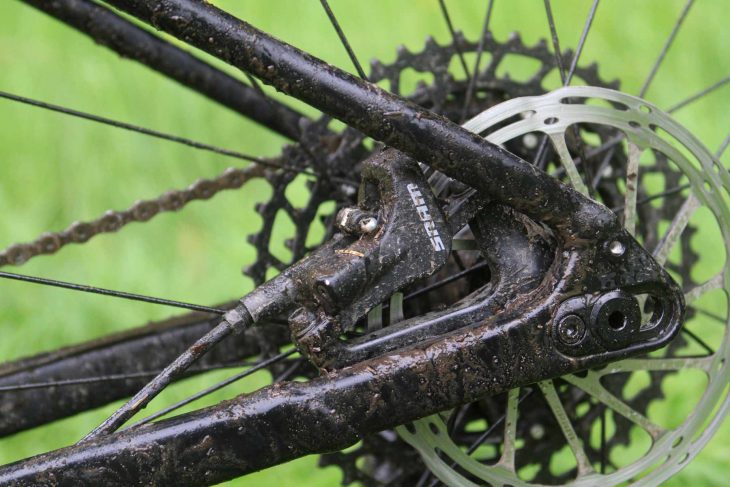
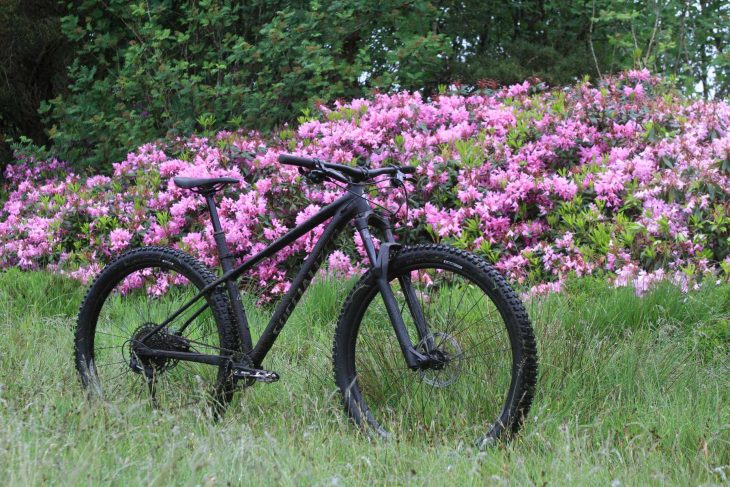
Looks like a Chameleon……
I just picked up my Expert 29 two days ago, and have since put about 20 singletrack miles on it. I’m very impressed, coming from an old full-suspension, this is so much more fun to ride, and handles everything I throw at it well.
This or the base model stumpjumper st for a couple extra $100?
Rsd sergeant ticks more boxes for much less
Fwiw